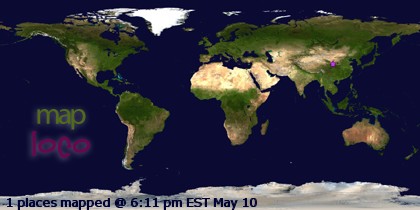(If a picture is worth 1000 words, a regular computer must be worth at least 5.5 netbooks. I definitely use my computer much more often than my netbook. It's easier to type on, faster, and just plain prettier. Really, the only thing my trusty but slow netbook has over my beloved laptop is an SD slot. And that, dear readers, is only important when one is meaning to create a picture post. Say, in order to introduce one's blog audience to one's new home. I'm afraid it hasn't happened yet. But: what kind of writer would I be if I relied solely on pictures to give you an image of the place? Let's see what I can do to paint one first. The actual photos will come later.)
So, you're a traveler arriving to Palencia on the bus. You arrive in the station, grab your bag, and walk out into the late-September sunlight. You're on a non-descript street with a park on the other side, a dusty and much-used children's climbing structure in the center. You're not sure what direction to go and ask a couple of bored-looking teenagers, who point toward a round-about.
At the roundabout, things start to get interesting. There's a shoe store whose window is stacked with knee-high boots, a pizza place, a typical Spanish bar with metal countertop and stools. Even at this time in the afternoon, when the streets are empty, there are people there reading the 'Diario Palentino' and drinking hot, sweet espresso out of tiny cups. You walk past a shuttered bakery whose window is piled high with glossy truffles, fluffy cakes, and cookies packed with nuts and chunks of chocolate. Mental note: come visit later.
At the other end of the intersection you pass onto Calle Mayor, the nervous system of the city, a narrow stone pedestrian street that makes up most of Palencia's downtown. Beautiful old buildings in various archetectural styles and soft colors rise on both sides, most supported by columns that form a colonade for walking underneath. At first, the Calle Mayor resembles an outdoor mall--and in many ways it is. Flashy fashion boutiques crowd one after another, jockeying for space with banks and cell phone stores. But start to look carefully, and you can find almost everything you need here. A bakery, wafting the scent of new cookies into the street; Pilar's Imprenta for all your stationery needs; an electronics store; a supermarket; a coffee shop. This side of the Calle Mayor is particularly architecturally stunning. The Provincial Office is here, with a spun sugar spire; an old university facade looks like a Venetian Palace. On one side a brief passage leads to the Plaza Mayor, or town square, a small but bustling stone plaza where children play in the evenings on the statue in the center. On the other is a street that opens toward the cathedral, whose pinions are topped in those same evenings with a flock of storks and whose grandeur is surrounded by one of the town's only true plazas, filled with trees and open-air cafes.
You reach the halfway point. Calle Mayor is bisected by Calle Cestilla, a bustling automobile throughway. If you turn right here, you can find the striking coral city hall, topped by white icing flourishes. You'll find the city's theaters here, too, and the green cast iron Mercado de Abastos, filled with butchers and produce stands. But you keep going straight, and the pedestrian street continues.
A grand casino with turn-of-the-century architecture serves famously delicious meals on one side of the street, a laundromat and fabric store shore up more fashionable shops on the other. In a few moments, you can see 'La Gorda,' the smooth soapstone sculpture of a woman that marks the street's only fork. Walk to the right and you'd eventually find yourself on the banks of the Pisuerga river, with its assortment of stone and metal bridges arching over the green water, ducks swimming underneath and branches trailing in the current. But you choose to walk to the left, and the end of the Calle appears. You've reached the Parque Salon, an expanse of manicured trees and flowers that features children riding merry-go-rounds in the evening and whose benches fill with the elderly as the sun goes down.
Past the Parque, continuing north, the town changes. To the south, the city has an old, classic feel. Now, you are in modern neighborhoods, apartment buildings whose first floors are packed with bars and shops. The Plaza España welcomes you with a fountain and a scattering of cafes. Soon after you pass the boxy Escuela de Idiomas, where students of all ages study German, English, French, Italian. You see busy playgrounds set with spindly trees and clusters of churches in brick, concrete, sandstone.
Walk far enough and you will pass the rusty red brick walls of the Fabrica de Armas, a working gun factory. Keep going: now there are car dealerships, industrial warehouses, a giant mall, a hospital and famous nursing school. If you had enough time, you could walk all the way to the edge of town and into the hills--and from there you could see the whole town, the neighborhoods dissolving into the plains beyond, and a giant statue of Jesus Christ (called the Otero here), watching over everything.

No comments:
Post a Comment